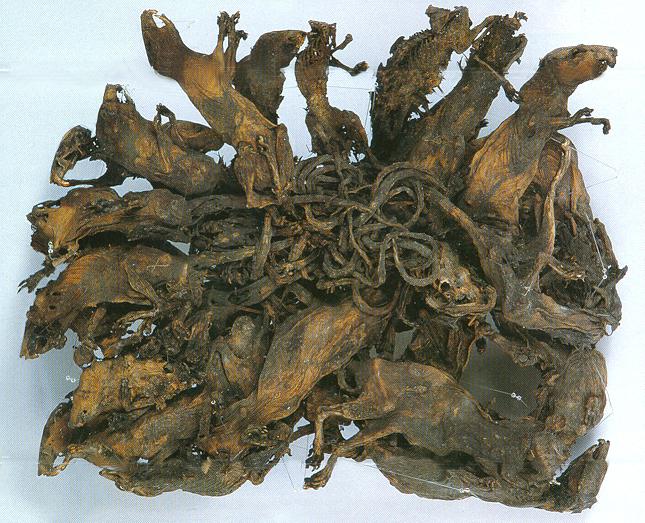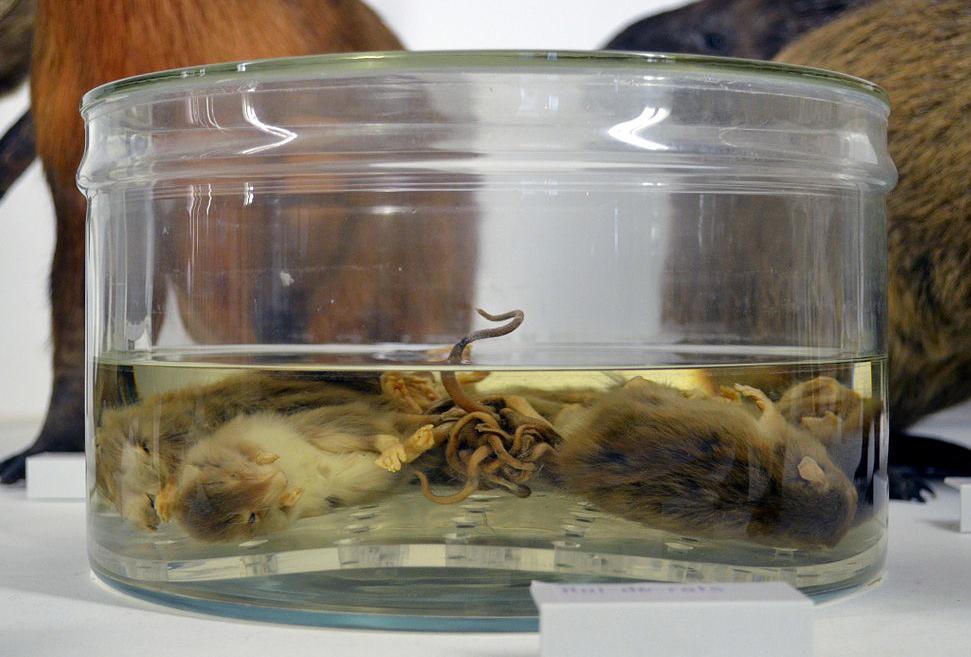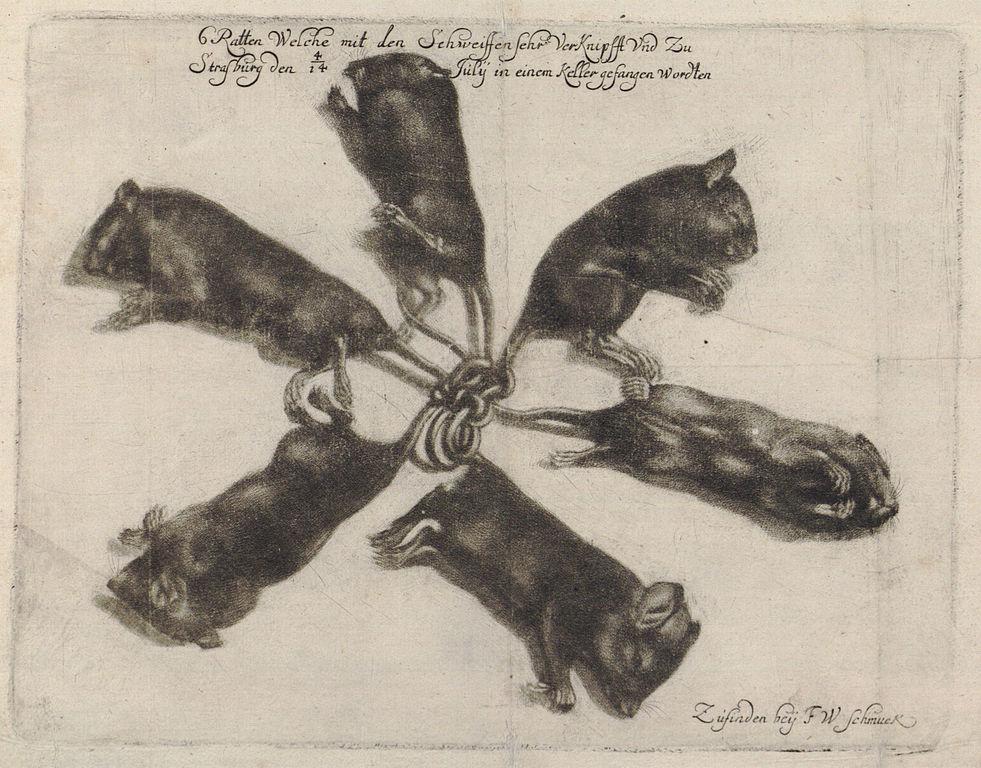Atlas Obscura on Slate is a blog about the world’s hidden wonders. Like us on Facebook, Tumblr, or follow us on Twitter @atlasobscura.
What comes to mind when you hear the phrase “rat king”? Perhaps a sniffy-nosed rodent scampering about in a crown? Or maybe a ballet dancer in a rat costume, a la the Mouse King in Tchaikovsky’s Nutcracker? Well, take those innocent visions, dash them, and report to Room 101. There, in your bespoke face-cage, you will meet the real rat king.
A rat king, or roi-de-rats if you want to get all classy and French about it, is a pack of rodents whose tails have become entwined. The adhesive for this rat tangle may be dirt, blood, or feces, or the tails may simply be knotted together. The number of rats in a rat king varies wildly — two rats can make a rat king, albeit a pretty pathetic one.
Reported rat king sightings date back to at last as far as the 16th century. Germany is a particular hotspot, for reasons unknown. The largest known specimen is a mummified 32-rat snarl, on display at the Mauritianum museum in Altenburg, Germany.
Behold the monstrous majesty:

Photo: Naturkundliches Museum Mauritianum Altenburg/Creative Commons
There are also rat kings on show at France’s Natural History Museum in Nantes (nine rats), the Zoological Museum of Tartu, Estonia (16 rats), and the Zoological Museum of Strasbourg (10 rats).
The big question in all this is whether rat kings can form without human intervention. Certainly a portion of the “found” specimens are best consigned to the category of Cryptozoology along with the Feejee Mermaid and the Skunk Ape. But did any of the rodents become entangled of their own accord? Are there real rat kings? The answer is a definite maybe. Sweet dreams.
Visit Atlas Obscura for more on rat kings.

The Nantes rat king.
Other creatures to make you squirm:
